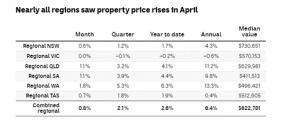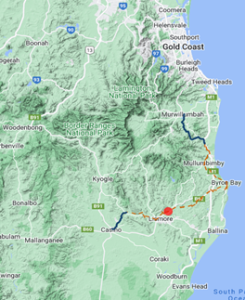Planning Australia Futures: Green Light for Transport Oriented Development?

By Denis Bright
The rediscovery of Transport Oriented Development (TOD) as a planning outreach in NSW is one of the most positive developments in Australian politics. The property market cannot be severed from the unaffordable grip of neoliberal values. However, some short-term tinkering from TOD commitments might improve affordability levels. This article offers some background for discussion purposes to this initiative which can be applied in the other states and territories at a higher policy profile.
Initiatives from NSW Planning Minister Paul Scully will focus on the transformation of urban systems from the inner suburbs to outer metropolitan and adjacent regional areas through government involvement in co-investment processes where the heavy investment initiatives are taken up by the private sector (Media statement 29 April 2024):
The first stage of the NSW Government’s Transport Oriented Development (TOD) planning reforms is being delivered today, with the finalisation of the State Environmental Planning Policy (SEPP).
The new SEPP will amend planning controls around thirty-seven well-located metro and rail stations, with eighteen commencing immediately, helping to deliver more homes that are well designed and in well-located areas.
Over the next 15 years, this part of the TOD policy is estimated to deliver more than 170,000 new homes in mid-rise dwellings with new affordable homes, and apartment buildings that contain commercial space to create vibrant communities close to transport, services and jobs.
The NSW Government is committed to tackling the housing crisis. If we don’t build more houses, families will up and leave because they can’t afford a home in NSW. And if we lose our young people, we lose our future.
The SEPP is informed by consultation and feedback from councils and peak industry bodies on the proposed development standards contained in the SEPP.
TOD initiatives in affordable housing, environmental planning and improvements to local infrastructure can be delivered without the burdens of heavy levels of unsustainable public spending. The quality of these outcomes is of course an agenda in the making.
Similar policies are being applied in most other states and territories without the enthusiastic framing of TOD commitments in NSW. Perhaps this is a missed opportunity in those other locations.
In Brisbane, the Queens Wharf Parkland Precinct adjacent to the North Quay Citycat and ferry terminal has some elements of a TOD initiative. TOD commitments are already state government policy in Queensland (Press release Department of Transport and Main Roads). Here at Queens Wharf, a once blighted areas under the pylons of the Riverside Expressway is being transformed with new parkland, lighting and colourful murals as a positive benefit from a multi-billion investment by the Star Entertainment Group with the financial support of the Queensland Government.
The Department of Planning in NSW has decided to give TOD commitments a higher profile in its communication frames to the electorate. Initially, there will be a focus on the transformation of urban systems in the Newcastle to Illawarra Corridor with a focus on Sydney. Planners have identified the potential of under-utilized space available near train stations built in the nineteenth century. These sites can adapt to changing contemporary needs as sites for more affordable higher density housing, vibrant retail outlets and sites for additional community services.
Property investors have appreciated the market potential of Sydney’s inner suburbs for decades. Sydney South and Inner West precincts are being transformed by gentrification. Terrace houses are fetching well over two million dollars on the property market. TOD processes might help to infuse a degree of affordability to these lively inner-city precincts.
Planners in NSW have zoned their initial TOD commitments to within four hundred metres of major rail transport hubs between Newcastle and Wollongong under a new Planning Policy (SEPP). The initiatives will over-ride some local environmental planning controls within 400 metres of thirty-seven important rail transport hubs. From 13 May 2024, development applications (DAs) can be lodged on the NSW Planning Portal for sites around the first eighteen metro and rail stations. Potential developers can evaluate the compatibility of their applications through planning apps to avoid delays with proposals that contravene the new procedures under the modified State Environmental Planning Policy (SEPP).
The heavy lifting for urban transformation will come from government support for private sector initiatives. NSW has no spare financial reservoirs for too much direct support for the planning changes. Speaking at the McKell Institute on 22 April 2024, Premier Minns noted the difficult state of financial relationships between the Commonwealth Grants Commission and NSW with a decrease of almost $12 billion in GST allocations in 2024-25 over the next four years.
Far away from the McKell Institute in World Square in the Sydney CBD, the cost-of-living crisis has tarnished the old Australian suburban dream with both financial and environmental costs. Carbon emissions from motorized transport are likely to peak at 26 per cent of all emissions in 2025 before commencing to decline a decade later when total emissions will be half the levels prevailing in 2005 (Dept. of Climate Change and Energy 2023).
Sydney has become the least affordable metropolitan area on the latest annual data:

Housing costs in nearby regional areas were catching up with prices across Metro Sydney.

The National Housing Accord is scheduled to move Australia towards a better housing supply through a commitment to higher density living by the late 2020s. Both sides of politics in NSW claim a commitment to affordable public transport fares to support the commitments to affordable housing.
Under Sydney’s OPAL fare structures, public transport fees are capped at fifty dollars a week. Yet Airport Gate Fees are still a real barrier to increased public transport usage at Sydney’s Airport Stations. However, quite extraordinary $2.50 fares are available for seniors in NSW using Opal Cards across other part of the Sydney Metro Area and adjacent regional areas.
NSW and Victoria have extended their online bookings services to both trains and connecting buses in localities close to metropolitan areas. In the future, commercial coach operators might be willing to join the booking networks with add-on fares beyond existing Counrtylink bus destinations through online booking systems. By connecting the remnants of key regional rail services across Eastern Australia with affordable bus links, these TOD commitments might assist in making regional areas less isolated for those new residents on a quest for more affordable housing.

Northern Rivers Rail Trail-Murwillumbah to Casino
Yet another variation to the TOD initiatives has been played out in Northern NSW as part of the cross-state urban corridor from Gold Coast to the Ballina-Casino sub-region with its population of over one million.
The Burringbar Rail Trail has also created fringe benefits for local eateries, accommodation and bicycle hire.
Disused scenic rail links have become healthy venues for hikers and cyclists across Australia.
A nineteen kilometres route between Murwillumbah and Burringbar is now fully operational. This rail trail will be extended to Casino-a distance of 130 kilometres.
The government of Premier Minns is certainly striking up the right cords in its communication strategies in this era of costs-of-living politics which extend to affordable weekend outings for residents and tourists in the Northern Rivers District.
References
Australian Government 2023. ‘Australia’s emissions projections.’ Available at https://www.dcceew.gov.au/sites/default/files/documents/australias-emissions-projections-2023.pdf
Entman, R. M. (1993). Framing: Toward clarification of a fractured paradigm. Journal of Communication, 43(4), 51-58.
Jacobs, Jane. 1961, The Death and Life of Great American Cities. New York: Random House.
NSW Government 2924. ‘Transport oriented development programme.’ Available at https://www.planning.nsw.gov.au/policy-and-legislation/housing/transport-oriented-development-program
NSW Department of Planning 2023. ‘Transport oriented development program.’ Available at https://www.planning.nsw.gov.au/sites/default/files/2023-12/transport-oriented-development-program.pdf.
OV-chipcard Netherlands 2024, ‘Traveling with the OV-chipkaart’. Available at https://www.ns.nl/en/travel-information/traveling-with-the-ov-chipkaart.
Roy Morgan Research 2023. ‘Public transport use increases in March Quarter 2023’. Available at https://www.roymorgan.com/findings/9281-public-transport-patronage-rises-post-pandemic-july-2023.
 Denis Bright (pictured) is a financial member of the Media, Entertainment and Arts Alliance (MEAA). Denis is committed to consensus-building in these difficult times. Your feedback from readers advances the cause of citizens’ journalism. Full names are not required when making comments. However, a valid email must be submitted if you decide to hit the Replies Button.
Denis Bright (pictured) is a financial member of the Media, Entertainment and Arts Alliance (MEAA). Denis is committed to consensus-building in these difficult times. Your feedback from readers advances the cause of citizens’ journalism. Full names are not required when making comments. However, a valid email must be submitted if you decide to hit the Replies Button.
Like what we do at The AIMN?
You’ll like it even more knowing that your donation will help us to keep up the good fight.
Chuck in a few bucks and see just how far it goes!
Your contribution to help with the running costs of this site will be gratefully accepted.
You can donate through PayPal or credit card via the button below, or donate via bank transfer: BSB: 062500; A/c no: 10495969










12 comments
Login here Register here-
Leila -
Margery -
James Robo -
Tessa_M -
Laura -
Frances -
Burleigh Waters -
rubio@central coast -
rubio@central coast -
New England Cocky -
Burleigh Waters -
Return to home pageAnd the band played with great enthusiasm to cheers from the spirits of Jack Lang and William McKell:who once spoke out defiantly:
It’s a Long Way to Outer Metro,
It’s a long way to Go:
Rose jackson is our Housing Minister
Relief Through TOD is on the Go
Farewell to Control by the Property Market
Let those homeless battalions are our target.
It’s a Long Way to Outer Metro
And we need some place to go.
Housing prices in Sydney justify some affordability strategies in public transport fares. Action is needed on the Gate Fees which are imposed on passengers who access the Sydney Airport by public transport as Sydney Airport is now run by corporate entities.
Definitely charge up the Green Lights for affordable public transport and housing.
The NSW approach to Transport oriented Development is user friendly to potential investors.
Transport orientations offer substance to political rhetoric..
Denis, Thanks for an interesting and well-researched article on Transport orientated development.
New residents in the coastal regions need affordable transport and access to community services and especially health services. I like the idea of affordable cross-state public transport as a big population has been built up in Northern NSW. Perhaps Queensland and NSW Governments could share the costs of offering through services from Gold Coast Rail to Byron Bay, Ballina and the train services from Casino
Cheers to NSW Labor for its rediscovery of TOD: The Hornsby-Newcastle Region is full of potential TOD hubs. TOD is a win-win for both the property market and struggling householders. NSW has delivered excellent transport services to the Central Coast.
On a surfing trip to the USA, I noticed that the LA-San Diego Line is mainly single track. Locomotives have to be added on both ends of the diesel trains which pass through surfing spots like Trellis Beach and San Onofre. There are no turn-about facilities for trains in a big city like San Diego. Imagine is this occurred in Sydney where there are more than twenty platforms at Central Station.
Without social democracy and government intervention in planning, there can be no Light on the Hill. Capitalism in its neoliberal format cannot deliver for working people.
Our obsession with the USA as the world’s defender of democracy with military might is no substitute for the McKell style of Labor initiatives from a by-gone era.
These communication framing policies need to be rediscovered by policy insiders, their lobbyist and consultant friends who strive to make a fortune out of Labor Governments in some states. Just look at the LinkedIn web site and see their connections to Labor Governments.
No wonder Labor struggles with its primary vote and parts of the Calare electorate re-elect the National Party with the support of far-right preferences from One Nation and UAP. Bathurst was once part of Ben Chifley’s electorate but that goodwill has evaporated.
My typing mistake: It’s Tressle Beach in California named after the archaic tressle railway bridge on the single track line from LA to San Diego.
@ Burleigh Waters: Another project requiring long overdue Sydney government consideration and funding is the renovation and re-opening of the railway north of Armidale NSW to Wallangarra-Jennings on the Queensland border.
This about 216 km of railway line is the sole public transport for the ageing residents currently battling to travel 2-3 hours in a bus or patient van to access (up to 300 km) distant medical and government services that the Sydney Parliament is unwilling or unable to provide locally.
This Great Northern Railway line (GNR) was closed to offset the cost of subsidising the western suburbs Sydney metro network by a NSW LABOR government about 1988 because closing the GNR that serviced the Northern Tablelands electorate that usually voted NOtional$ was more politically palatable than losing votes in the LABOR strongholds of western Sydney.
Now it is time to re-open this railway line for passenger and through freight services.
Agreed Leila: It’s a long way to Outer Metro.NSW Labor has come up with new initiatives in affordable higher density development. Struggling
to may mortgages and rents out there is generating a growth in far-right policies.However,Labor federal member Susan Templeman in Macquarie has
generated tremendous support with a vote of 84 per cent after preferences in the Katoomba Central Booth on 22 May 2022. In some places, the Light on the Hill
still shines brightly, Macquarie was indeed Ben Chifley’s old electorate which once extended out to Bathurst.
Pingback: The Week in TOD News May 11-17, 2024 – The Transit Friendly Planning Newsletter